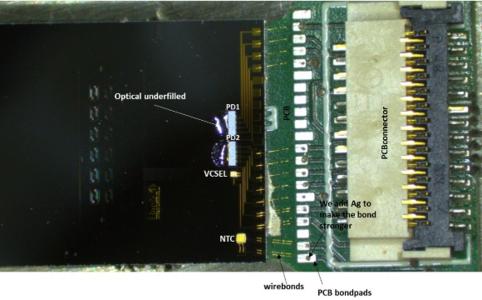Integrated label-free detection in optofluidics systems for sample analysis
Programme
TDE
Programme Reference
T314-603MM
Prime Contractor
KAYSER ITALIA
Start Date
End Date
Status
Closed
Country
Italy

Objectives
Design, breadboard and test a label-free optofluidic refractometric biosensor array with integrated sources and detectors
Description
The concept of highly integrated, miniaturised chemical and biological analysis systems is of great potential interest for space exploration missions, be it for scientific investigations or for monitoring contamination and health parameters onboard a manned spacecraft.
Optics implemented on microfluidic chips provide small, and often much cheaper ways to interrogate biological systems from the level of single molecules up to small model organisms. The optical probing of single molecules has been used to investigate the mechanical properties of individual biological molecules; however, multiplexing of these measurements through microfluidics and nanofluidics provides many analytical advantages. Optics-integrated microfluidic systems can significantly simplify sample processing and allow a more user-friendly experience; alignments of on-chip optical components are predetermined during fabrication. Furthermore, sample loss from complicated preparation and fluid transfer steps can be virtually eliminated, a particularly important attribute for biological molecules at very low concentrations. By exploiting the ease with which fluids and particles can be precisely and dynamically controlled in microfluidic devices, optical sensors capable of unique imaging modes, single molecule manipulation, and detection of minute changes in concentration of an analyte are possible.
In a GSP study Integration of optical detection in microfluidic systems for space exploration (AO/1-6925/12/NL/AF) a number of potential solutions has been investigated and evaluated. One of main candidates is a class of optofluidic biosensors based on refractive index changes caused by specific molecule capturing by surface immobilized receptors such as antibodies, aptamers or mips. This principle obviates the need of a camera system and allows for a complete solid-state, chip-based solution for the optical detection.
TASK description
1- Review and update of requirements
2- design of an integrated optics microfluidic system and immobilization technology for ultrasensitive detection
3- manufacture the breadboard and test according to test plan
4- elaborate the test report and conclusions
Application Domain
Exploration
Technology Domain
22 - Environmental Control & Life Support (ECLS) and In Situ Resource Utilisation (ISRU)
Competence Domain
6-Life & Physical Science Payloads, Life Support, Robotics & Automation
Keywords
4-Life Support and Medical
Initial TRL
TRL 2
Target TRL
TRL 4
Achieved TRL
TRL 4
Public Document
Executive Summary
